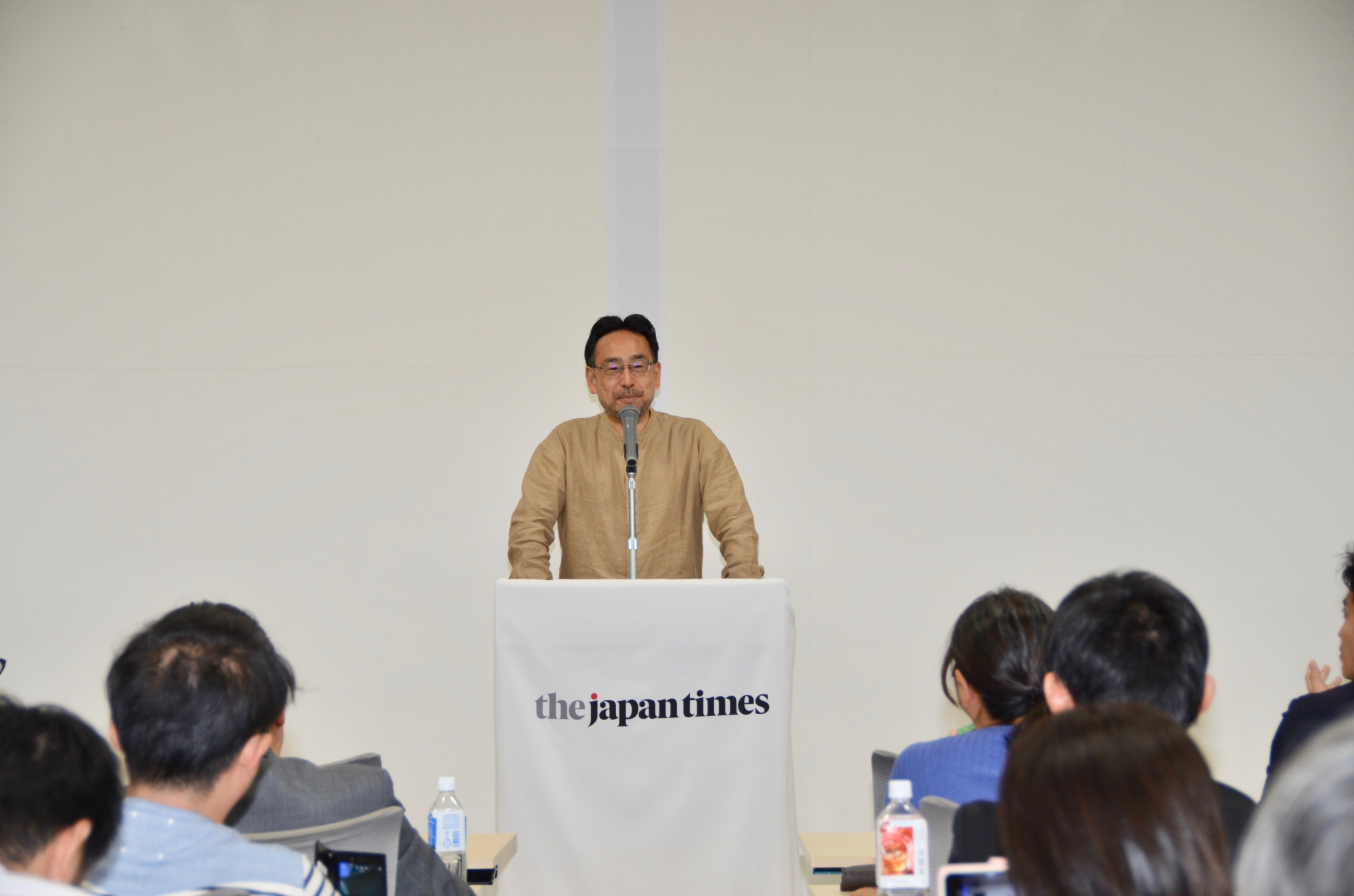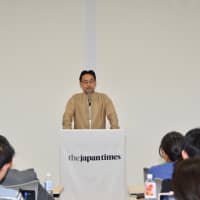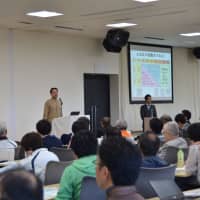A two-day event on topics related to satoyama (mountains and woods shared and maintained by residents of the adjacent rural communities) was held at the Jinseki Kogen Hotel in the town of Jinsekikogen, Hiroshima Prefecture, on Oct. 20 and 21. The event was hosted by the Japan Times Satoyama Consortium, the Chugoku Region Governors Association and Jinsekikogen.
At a symposium that attracted around 200 participants, Kosuke Motani, the chief senior economist at the Japan Research Institute Ltd., gave the keynote speech on the first day that served as a wake-up call to attendees.
Five years have passed since the book he co-authored, "Satoyama Capitalism," was published. It inspired many who had been feeling the limitations of modern capitalism in the mature and aging economy of Japan.
However, Motani said that people are still living in the reality of 50 years ago. One of the critical changes Japan has faced in the last half century besides the number of children being born having been halved, is that the average life expectancy has grown dramatically.
"Fifty years ago, people only lived to their 60s. City dwellers of today still live in the way that they can only survive until they are 60-ish," he said.
According to the Ministry of Health, Labor and Welfare, Tokyo and Osaka, two major urbanized prefectures, both ranked third, with 2.2 percent, in the ratio of public assistance recipients by prefecture as of 2015. Furthermore, Tokyo's 23 wards, the most urbanized metropolitan area, is even higher, with 2.4 percent of people receiving public assistance, according to Motani.
"Tokyo is bound by a system that requires a lot of money just to live. A pension is not enough at all to live after retirement in Tokyo," said Motani. "But most people get stuck and say that going back to their hometown in the countryside won't be any better, which is a half century-old mindset."
He explained that people living in rural areas have multiple roles until they die whereas the lives of city people "end" suddenly when they retire from the only job that they have clung to for many years, leaving them empty-handed both financially and socially. "It is important that everyone, including those who live in rural areas, notice this and educate the next generations," he said.
"The short-sightedness and selfishness of the modern-day financial capitalism, the belief that higher GDP and economic growth rate is almighty and the impression that there are no jobs or money in rural areas — all of these are based on old ways of thinking," Motani stressed.
Satoyama capitalism refers to an economy based on coexistence and cyclic regeneration of resources. "Japan has already become rich as a country. We need to shift our attention from how to grow more, to how to maintain," he said.
To explain what exactly can be done to make the shift, he shared inspirational ideas such as "keep a balance between where to depend on money and where not to," "prepare a backup self-sufficiency system for emergencies" and "increase the population that is related to the community to build a barter economy." He also mentioned "use money to exchange, not to measure values," and "use what you earn, just like you exercise after you eat, because what you store only becomes heavy fat that slows things down."
"Is Satoyama capitalism an escape from the reality of global competition? The answer is definitely no," said Motani. Japan is still doing well in exports, and recorded a trade surplus with China last year, according to Japan External Trade Organization statistics.
"Many of the factories that support Japan's competitiveness are located in remote areas. Farm products that represent Japan's brand are made in satoyama. Rural areas are capable of conserving energy far more efficiently than cities by using forest resources," said Motani.
Again, rural areas are often blindly considered jobless and hard to live in. However, satoyama's potential realizes both long and fulfilling lives of people and Japan's high competitiveness in the global market, Motani said.
This series introduces municipalities and local companies promoting the beauty and excellence of deep Japan.





